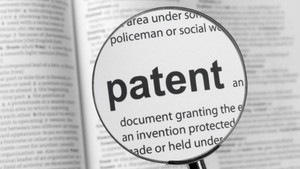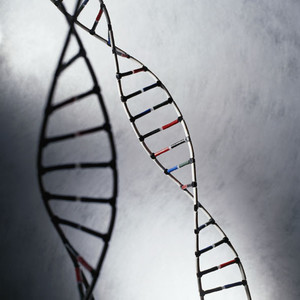Many new developments have taken place in the biosimilars industry in 2014 [1]. One of the most important milestones during 2014 was the news that the US Food and Drug Administration (FDA) had accepted several biosimilars applications, and had even recommended the approval of Sandoz’s filgrastim biosimilar in all five indications of the originator product (Neupogen).
FDA also granted tentative approval for a new insulin glargine product Basaglar (LY2963016) in August 2014. The same product (LY2963016) was approved in Europe as a biosimilar, Abasaglar (previously Abasria), in September 2014.
The European Medicines Agency (EMA) has also been busy approving three biosimilars during 2014. As well as Abasaglar (insulin glargine), these included a filgrastim biosimilar (Accofil) from Accord Healthcare and a follitropin alfa biosimilar (Bemfola) from Finox Biotech. The agency is also currently reviewing biosimilar applications for human insulin and etanercept.
Two biosimilars (infliximab and filgrastim) were also approved in Japan during 2014. A trastuzumab biosimilar, Herzuma, was approved in South Korea in January 2014. Then the Russian Ministry of Health approved a rituximab biosimilar, AcellBia (BCD-20), in April 2014.
In a decision somewhat at odds with the rest of Europe, France introduced legislation allowing substitution of biosimilars, which came into effect on 1 January 2014. To date, no other EU country has explicitly authorized the substitution of biologicals from different manufacturers and a number of EU Member States have gone as far as banning this practice.
The contentious issue of how to name biosimilars was once again a hot topic for discussion during 2014. The World Health Organization (WHO) drafted a proposal in 2014 for a biological qualifier (BQ), which would assign a four-letter alphabetic code to all biologicals.
The need for education on biosimilars was also highlighted, with the European Generic medicines Association (EGA) calling upon national authorities and medical societies to actively engage in reducing the knowledge gap about biosimilars.
Guidelines have once again been a hot topic during 2014. EMA updated its overarching guidelines. China’s Center for Drug Evaluation (CDE) issued draft guidance on 29 October 2014 outlining the principles for developing biosimilars of biologicals already approved in China.
FDA release draft guidance on reference product exclusivity for biologicals and guidance on how to use clinical pharmacology data to show biosimilarity to a reference product. The agency also published its first-ever edition of the ‘Purple Book’ in September 2014, a new set of lists of licensed biological products and interchangeable biosimilars.
2014 has also seen the results of many clinical trials being published or presented at scientific conferences, as well as many new trials for candidate biosimilars being started.
Extrapolation of indications was also a topic of interest during 2014, with EMA defending its decision to extrapolate indications for biosimilars under certain conditions and backing this up with evidence from post-marketing studies. Despite this assurance by the European regulator, many medical societies have all specifically recommended against use of biosimilars in extrapolated indications.
Meanwhile, India’s drug regulator, the Drugs Controller General of India (DCGI) granted marketing approval for an infliximab ‘similar biologic’ BOW015, two trastuzumab ‘similar biologics’ CANMAb and Hertraz and a darbepoetin alfa ‘similar biologic’ during 2014.
Finally, biopharmaceutical giant Amgen and US generics maker Actavis spoke to GaBI about their views on biosimilars and their biosimilar plans.
The increasing number of clinical trials being carried out for biosimilars, the number of global biosimilar approvals, the first FDA recommendation on biosimilar, and the growing number of biosimilar applications in the US, all suggest the future looks bright for the biosimilars market in 2015.
According to a report published by IMS Health in October 2014, the use of biosimilars in Europe; however, still varies widely between countries and therapeutic areas. This report highlighted the need for continuing education of patients, prescribers, and healthcare payers.
Editor’s comment
It should be noted that ‘similar biologics’ approved in India might not have been authorized following as strict a regulatory process as is required for approval of biosimilars in the EU. The EMA (European Medicines Agency) regulatory requirements ensure the same high standards of quality, safety and efficacy for biosimilars as for originator biologicals, and also include a rigorous comparability exercise with the reference product.
Readers interested in contributing a research or perspective paper to GaBI Journal – an independent, peer reviewed academic journal – please send us your submission here.
Related articles
Biosimilars developments during 2013
Top developments in biosimilars during 2012
Reference
1. Top developments in biosimilars during 2014. Generics and Biosimilars Initiative Journal (GaBI Journal). 2015;1(1):42-7. doi:10.5639/gabij.2015.0401.010
Permission granted to reproduce for personal and non-commercial use only. All other reproduction, copy or reprinting of all or part of any ‘Content’ found on this website is strictly prohibited without the prior consent of the publisher. Contact the publisher to obtain permission before redistributing.
Copyright – Unless otherwise stated all contents of this website are © 2015 Pro Pharma Communications International. All Rights Reserved.








 0
0











Post your comment